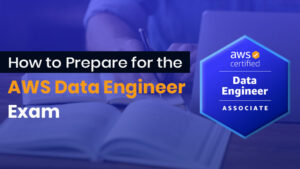
How to Strengthen Security Using CIS Controls and Posture Analysis
How to Strengthen Security Using CIS Controls and Posture Analysis Introduction In the fast-paced and ever-evolving world of cybersecurity, defending digital infrastructure goes far
Enhance your Skills in Cloud Computing , IP Networking , Microsoft , Artificial Intelligence , Cybersecurity and Many More . Come and Join IPSpecialist.

How to Strengthen Security Using CIS Controls and Posture Analysis Introduction In the fast-paced and ever-evolving world of cybersecurity, defending digital infrastructure goes far

How to Prepare for the AWS Data Engineer Exam Introduction With the world becoming increasingly data-driven, organizations are depending on cloud-based systems to store, process,

Hybrid vs. Multi-Cloud Transformation: Choosing the Right Strategy for Your Business Introduction In the digital-first economy of today, cloud transformation is no longer a
Table of Contents
As businesses increasingly migrate their operations to the cloud, the importance of cloud security has never been more critical. The dynamic nature of cloud computing, combined with the evolving landscape of cyber threats, demands that organizations stay ahead of the curve by embracing the latest trends and innovations in cloud security. This blog explores the future of cloud security, highlighting key trends and innovations that are poised to shape the way businesses protect their digital assets.
Enhance Your Cloud Security Now! Explore our comprehensive cloud security services at services.ipspecialist.net. From Cloud Transformation to IoT and AI solutions, IPSpecialist is here to fortify your cloud infrastructure. Start your journey with us today!
Cloud computing has revolutionized how organizations store, manage, and access data. With benefits such as scalability, flexibility, and cost-efficiency, the cloud has become a vital component of modern IT infrastructure. However, as the adoption of cloud services grows, so does the need for robust security measures. Cybercriminals are continually developing sophisticated methods to exploit vulnerabilities in cloud environments, making it essential for businesses to invest in advanced security solutions.
Zero Trust Architecture eliminates the assumption of trust within networks, ensuring every user, device, and application is continuously authenticated. In cloud environments, ZTA uses multi-factor authentication, encryption, and micro-segmentation to protect distributed resources and minimize attack surfaces.
AI and ML are revolutionizing cloud security by enabling real-time threat detection and adaptive defense. These technologies analyze patterns, predict vulnerabilities, and automatically adjust security policies, enhancing protection against sophisticated cyber threats.
SASE integrates networking and security functions into a single cloud service, providing secure access regardless of location. By combining secure web gateways, CASBs, and Zero Trust, SASE simplifies security management and improves performance, which is crucial for hybrid work environments.
Cloud encryption is evolving with techniques like homomorphic and quantum-resistant encryption. These advanced methods protect data during processing and against future quantum computing threats, ensuring data integrity and confidentiality in cloud environments.
CSPM tools continuously monitor cloud configurations for misconfigurations, vulnerabilities, and compliance issues. By automating remediation and aligning with security standards, CSPM helps prevent data breaches and ensures regulatory compliance in complex cloud environments.
Serverless computing introduces new security challenges, focusing on securing application layers and APIs. Serverless security strategies are essential for protecting function code, managing identities, and monitoring triggers in these highly scalable environments.
Data privacy regulations like GDPR and CCPA demand strict compliance in cloud security. Automated data classification, encryption, and anonymization techniques help organizations meet these requirements, safeguarding sensitive information and avoiding penalties.
IAM is evolving to offer more granular control and enhanced security through biometric authentication, context-aware access, and identity analytics. These innovations strengthen access policies, protecting cloud environments from unauthorized access and insider threats.
Managing security across multiple cloud platforms is challenging. Multi-cloud security solutions provide centralized visibility, policy enforcement, and threat detection, ensuring consistent protection across all cloud environments.
CSMA decentralizes security controls, allowing them to be distributed across multiple locations. This flexible, scalable approach enhances protection for cloud resources in dynamic environments, making it a key trend in the future of cloud security.
While cloud computing offers numerous benefits, it also introduces a set of security concerns that organizations must address proactively. Here are key cloud security concerns organizations face today:
To effectively address these concerns and enhance overall cloud security, organizations should adopt the following best practices:
The future of cloud security is driven by rapid innovation and new technologies to tackle emerging threats. To safeguard digital assets and ensure business continuity, organizations must stay updated on trends like Zero Trust Architecture, AI and machine learning, SASE, and advanced encryption techniques. Emphasizing CSPM, serverless security, IAM evolution, multi-cloud security, and CSMA will further strengthen security in complex cloud environments. Embracing these innovations will enable organizations to effectively protect their cloud infrastructure and achieve sustained success.
© 2025 All rights reserved | Privacy Policy | Terms and Conditions | Sitemap | Cookie Policy




